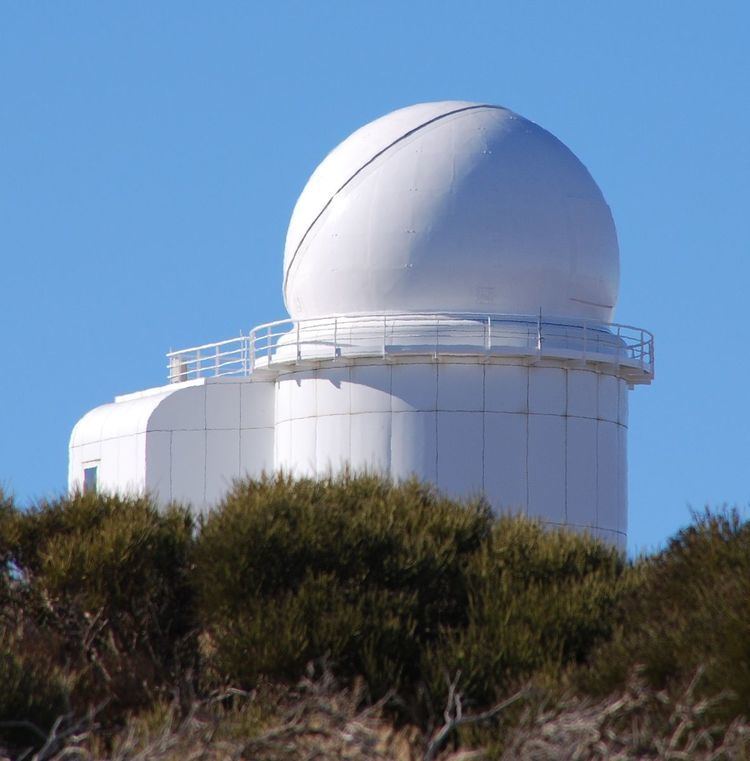Altitude 2,390 m (7,840 ft) Phone +34 922 32 91 10 | Established 1964 Code 954 | |
 | ||
Organization Observatorio Astronómico de Canarias Website www.iac.es/eno.php?op1=3&lang=en Telescopes ESA Space Debris Telescope, Vacuum Tower Telescope, Very Small Array, COSMOSOMAS, QUIJOTE CMB Experiment, THEMIS solar telescope[*] Address Corona Forestal Natural Park, C/ Vía Láctea, S/N, 38200 La Laguna, Santa Cruz de Tenerife, Santa Cruz de Tenerife, Spain Province Province of Santa Cruz de Tenerife Similar Museum of Science and the C, Teide, Fundación Canaria Cristino d, Museum of the History of Tenerife, Teide National Park | ||
Teide Observatory (Spanish: Observatorio del Teide), IAU code 954, is an astronomical observatory on Mount Teide at 2,390 metres (7,840 ft), located on Tenerife, Spain. It is operated by the Instituto de Astrofísica de Canarias since its inauguration in 1964. It became one of the first major international observatories, attracting telescopes from different countries around the world because of the good astronomical seeing conditions. Later the emphasis for optical telescopes shifted more towards Roque de los Muchachos Observatory on La Palma.
Contents
- Teide observatory presentation
- Solar telescopes
- Nocturnal telescopes
- Radio telescopes for cosmic microwave background astronomy
- Other buildings on the site
- List of discovered minor planets
- Climate
- References
Teide observatory presentation
Solar telescopes
Nocturnal telescopes
Radio telescopes for cosmic microwave background astronomy
Other buildings on the site
The observatory has a visitors' centre and a residencia (hostel) for astronomers. Brian May helped construct a building there to study interplanetary dust.
List of discovered minor planets
The Minor Planet Center credits the discovery of several minor planets directly to the observatory.
Climate
The position where the observatory is situated has a mediterranean climate (Köppen Csb), with average temperature features reminiscent of southern England. This renders in warm summers that averages around 23 °C (73 °F) with light frosts being possible and sometimes happening in winter. Extremes are moderated by its marine features, which combined with the altitude keeps temperatures below 30 °C (86 °F) even during heat waves, and in spite of the altitude the marine features are strong enough to prevent severe frosts. Sunshine levels, as typical of the nearby lowland arid climates, are high throughout the year. Many alpine areas at further distance from the equator are above the tree line at this elevation, but Teide is far above even any subarctic temperatures due to its position on the 28th parallel north.
